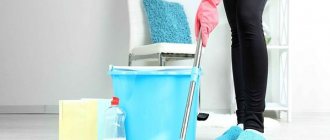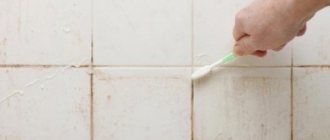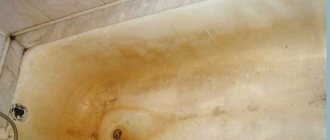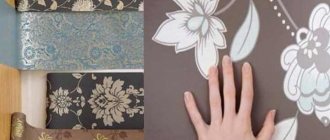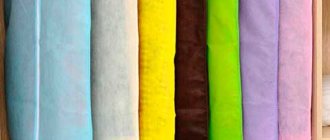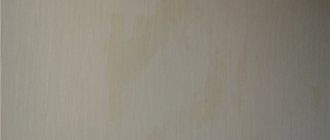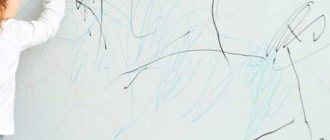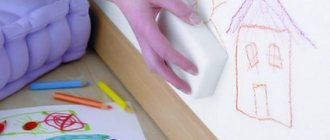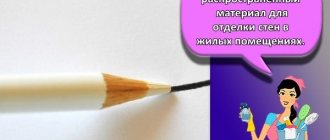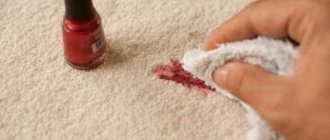Wallpaper is an element of decoration of walls and ceilings that transforms the renovation and makes it unique. Dust, drops, and various contaminants may accumulate on the surface of the facing fabric. To maintain a well-groomed and tidy appearance of the room, you need to know how to clean wallpaper from dirt, using special products or traditional methods.
General information about washable wallpaper
Unlike ordinary wallpaper, which is quickly destroyed by moisture, its washable counterparts, on the contrary, are adapted to withstand high humidity and even direct exposure to water. For this reason, these types of wall coverings can be washed, and some that are particularly durable can even be washed with a brush.
Due to its properties, washable wallpaper is popular not only in kitchens, but also in hallways, where a large amount of dirt and dust from the street traditionally settles, as well as in children's rooms, where a small child can easily walk along the surface of the wall with the same felt-tip pen. In the case of ordinary wallpaper, the latter would mean the need for repeated repairs, but washable wallpaper makes life much easier. At the same time, there are several options for such wall coverings:
- Paper. The lack of resistance to moisture in paper is compensated by coating it with a special varnish;
- Vinyl. In turn, they are divided into conventional ones, hot stamping with a non-woven backing, and those made using the silk-screen printing principle.
Types of washable wallpaper
Before cleaning the wallpaper, it is worth determining what types they are. The choice of a suitable remedy will depend on this. Classification includes:
- Paper-based canvases. Their surface is treated with a special moisture-resistant varnish. The material is used for finishing the kitchen and hallway.
- Vinyl. This material is foamed and secured with inhibitors. It feels soft and pleasant.
- Silkscreen printing. This type of vinyl is strong and thin. During its production, fabric fibers are added.
- Material based on hot stamping vinyl with a non-woven backing. These are meter rolls that can withstand even the harshest washing.
Typical kitchen moisture-resistant wallpaper
You can also wash the following, infrequently found wallpaper in the kitchen:
- liquid,
- metal,
- wooden,
- non-standard moisture-resistant washable wallpaper.
Advantages and disadvantages
In addition to the obvious advantages of ease of maintenance, such wallpapers have several more advantages:
- Increased resistance to moisture and dirt allows such wallpaper to be used for a long time - up to one and a half decades, without reducing its operational and visual characteristics;
- The material is equally effectively used for finishing all types of walls, from concrete and brick to plasterboard and wood;
- The installation process is quite quick and simple. Such wallpaper is also quite easy to remove.
Among the disadvantages of such wallpaper, many cite the inability to allow air to pass through, like ordinary paper wallpaper. As a result, the walls do not get the opportunity to “breathe”. At the same time, such wallpapers are also very expensive compared to ordinary ones, and they are often not purchased precisely out of the desire to save money.
Distinctive features
Content
Since the coatings are intended for relatively frequent washing, they are made from wear-resistant materials. And such canvases deprive the walls of their ability to “breathe”. Therefore, additional ventilation should be provided.
Regardless of the material from which the wallpaper is made, they have common properties:
- stick to any surface (concrete, plastered, plasterboard);
- they are easy to care for (you can get by with a brush and a damp cloth);
- serve for a long time (some up to 30 years);
- Easy to stick and easy to remove if necessary.
How to care for this wallpaper correctly? The international marking of the canvas is indicated on any package or insert.
It uses images of wavy lines with a brush:
- one line indicates moisture-resistant models that can be cleaned with a damp cloth;
- two lines are applied to models suitable for washing with non-aggressive compounds;
- Canvases marked with 3 lines can be washed with a sponge and a saturated soap solution;
- one line with a brush makes it possible to use a brush when washing;
- Three lines with a brush mark a particularly durable material that can be brushed using abrasive detergents.
♥This is interesting: an article on the website “How to choose the right linoleum.”
Labeling wallpaper of this type
First of all, pay attention to the labeling. In the case of washable wallpaper, we are talking about the image of a wave. If a wave is represented in a single number, then we are talking about moisture-resistant products, two waves mean washable wallpaper, and three mean super-washable. The latter can withstand particularly thorough washing and exposure to the vast majority of specialized household chemicals. In addition to waves, a comb can also be drawn on the marking. The latter means that brushes can be used when washing, but not hard ones.
Important! Sometimes the wallpaper is already pasted, but we cannot see its markings. How do we know that we have washable wallpaper? To do this, you need to wet a small piece of wallpaper in a not very visible place and see how the wetness affects the structure and paint of the wallpaper. After this, wait for the wallpaper to dry and see if there are any traces left.
Traditional methods for cleaning wallpaper at home
There are many ways to clean and wash wallpaper without resorting to chemicals and abrasive substances, which after several uses spoil the appearance, destroy the integrity of the pattern and wash off the paint.
Important! Before using any substance, even from improvised products and materials, it is necessary to conduct a test. To do this, apply the product in an inconspicuous corner or on the remains, rub lightly and watch the response. If the wallpaper has not deteriorated, has not lost color after drying, or streaks have not appeared on it, then continue cleaning using the chosen method.
Baking soda solution
Almost every housewife has a box of baking soda. It can rightfully be used for cleaning wallpaper. This method is considered the simplest; the most inexperienced housewife can handle it:
- Prepare a solution at the rate of 1 tablespoon of soda per 1 liter of warm, clean water.
- To wash, you need to take a soft cloth or sponge. A microfiber or bamboo cloth is suitable as a rag; when wrung out, water will not flow or drip from it. The sponge should not have a hard layer.
- The cleaning object is moistened in the solution and the dirty areas are wiped.
Food grade sodium will cope with the most insoluble stains on kitchen wallpaper.
Soapy water
Soap solution is used much more often in everyday life; it can even cope with grease.
- To prepare the detergent you will need 1 part liquid soap and 10 parts clean water. The composition is thoroughly foamed.
- A soft sponge or napkin is moistened in the solution and wiped the dirty area of the wallpaper. You can even rub it if the wallpaper allows it.
- The next step is wiping with clean water, without soap.
Soda and soap can be used immediately after drawing on the wallpaper with felt-tip pens or pencils, that is, the dirt has not yet had time to penetrate deeply into the fabric. If children's tricks have become ingrained into the structure of the coating, then they can only be dealt with using more severe methods.
Cleaning with talcum powder
Talc is a bulk substance that will remove dirt immediately after its application. In addition, it does an excellent job of removing old grease on wallpaper.
Application procedure:
- Take a soft sponge and a white granular substance - talc.
- Pre-cover the floor and wallpaper surface without contamination with newspapers, paper or oilcloth. This technique will prevent talc from getting on clean surfaces.
- Talcum powder is poured onto a sponge and applied to the dirty area. Leave for a few minutes.
- Then use a clean sponge to remove any remaining substance.
If the fat is not completely removed, then talc is applied again, covered with a dry cloth and heated with an iron. This will allow the fat to melt and be absorbed into the talc. In this case, it plays the role of an adsorbent that absorbs dirt. Baby powder and potato starch work like talc.
Lemon acid
Citric acid cleans everything – including wallpaper. It is able to remove any plaque, including greasy deposits. How to use it:
- Take 1 glass of cooled boiled water. The main thing is that it is clean. Add 2-3 tablespoons of acid to the container and mix.
- Use a soft sponge moistened with liquid to clean the dirty area on the wallpaper. This must be done carefully, preferably in one direction, so as not to harm the drawing.
- The solution is left on the wallpaper for 5 minutes, then it is removed with a sponge soaked in clean water. This removes any remaining citric acid.
An excellent remedy for marks drawn with alcohol-based markers.
Alcohol
When they see some stains on the walls, for example, children have drawn on them, grease or fruit juice has been splashed, housewives shrug their shoulders. But it is possible to save wall coverings if you use regular medical alcohol. If a stain is discovered, so to speak, “without delay,” then you should soak a cotton swab or a piece of cloth in alcohol and rub the stain until the plaque is completely dissolved and the alcohol dries. You don't need to do anything else.
When there is a felt-tip pen or glue from a sticker on the wallpaper, there is no need to rub the area with cotton, just hold the cotton in one place. The residue will dissolve and be absorbed into the tampon.
Dish detergent
Those wallpapers that can be generously moistened and even rubbed can be washed with a soapy solution using dishwashing detergent, be it AOS, Fairy, Drop, Myth, Biolan. A few drops of the product are diluted in one liter of water and thoroughly foamed. Then the foam is applied to a soft cloth and the coating is wiped. After a few minutes, wipe with a cloth soaked in clean water.
See also
How to properly and quickly clean the house, where to start and what stages to divide into
Hydrochloric acid
You can safely add these instructions to your repertoire of household tricks, since not everyone knows how to remove brilliant green from wallpaper. Hydrochloric acid will help.
- Take 3% or 5% hydrochloric acid.
- Be sure to try the product on the remaining scrap or inconspicuous area and watch how the wallpaper behaves under the influence of acid.
- Soak the cloth in the solution and apply it to the stain. You can even rub it lightly if the wallpaper allows it.
- Remains of acid are removed with a rag and clean water.
Important! The substance can only be used with gloves.
Hydrogen peroxide
Hydrogen peroxide removes blood stains from wallpaper. Soak a cotton swab in the liquid and wipe the dirty spot on the wall until the stain is completely dissolved. Use a new swab for each stain, as one can stain clean areas. After the procedure, wipe with a napkin and clean water.
Vinegar
There is often glue left in the places where the wallpaper strips join. Or, when wallpapering is unprofessional, you can stain the canvas with a rag dirty from glue. Not all products can dissolve wallpaper glue. In this case, vinegar will help. You will need 9% vinegar and a spray bottle.
The acid is sprayed onto areas coated with glue and left for 15 minutes, after which it is wiped with a damp cloth.
Melamine sponge
The sponge removes complex stains - felt-tip pen, marker, ink - from vinyl wallpaper. The object is quite hard and hard to the touch, so it should be cleaned carefully, only in the area of contamination. If the pattern on the wallpaper is foam or printed on paper, then such items cannot be used.
Clean with bread
If the wallpaper cannot be subjected to mechanical stress, namely rubbing, then rye bread crumb will do. It is leaned against the dirt and held for some time until the gluten absorbs the residue. The procedure is repeated several times until grease and food splashes are completely eliminated.
Wet wipes
By wiping the wallpaper with wet wipes, you can eliminate traces of dirty hands, children's pranks, for example, plasticine, fresh drawings with felt-tip pens. In the kitchen, napkins also remove only fresh food splashes: fruit and berry drops.
Cleaning with an eraser
If a child made a “rock drawing” with pencils or a ballpoint pen, then they can be erased with an ordinary office eraser. It will also help remove traces of incubation from insects.
Important! An eraser soaked in kerosene for several hours will remove grease and traces of glue.
How to clean with an iron
Place a paper napkin over the stain and run a warm iron over it. If the residue contains organic compounds, the heat will dissolve them and absorb them into the napkin. When there is a lot of dirt, change the napkin until it disappears.
Important! You cannot use a very hot iron, because any awkward movement will cause the wallpaper to become unusable. Nothing can wash away an iron stain.
How to wash wallpaper: available products and household chemicals
Important! The use of a water-repellent composition can significantly reduce the deposition of dust, grease and soot on the wallpaper, which is very important for the kitchen. However, this will not save you from serious contamination, and it will have to be removed by third-party means.
First of all, I would like to touch on the chemicals sold in stores. They are used if improvised methods do not help and the wallpaper contains serious or ingrained dirt. Products such as Anti-Mold and Whiteness can help with cleaning. In addition, specialized stores have a large number of additional products in their assortment.
At the same time, it is important to read the instructions and be sure that such chemistry is effective in the case of your washable wallpaper. At the same time, during the first use, significantly reduce the consistency in order to see its effect.
Cleaning wallpaper using improvised means
Every home has baking soda or soap. In the first case, we make a solution of 30 grams per liter, and in the second - 1 to 10 parts. In both cases, either warm or room temperature water is used. However, such products are used only in cases of light contamination. Dishwashing detergent also works in a similar way.
Removing marker marks on wallpaper
We already said above that washable wallpaper is often glued indoors for a child. And children, as we know, are poorly aware of their actions. In this regard, walls are often painted with felt-tip pens. And if in the case of ordinary wallpaper this, as a rule, is a “sentence”, then washable wallpaper can still be saved.
In this case, it is important to understand what is the paint solvent in the markers themselves. If we are talking about a water base, then ordinary water is suitable for removing stains, coupled with the methods that we mentioned above.
It’s more difficult with alcohol markers - to remove them you need to use alcohol itself or citric acid. Alternatively, you can also use vinegar. Simply moisten a cotton swab with one of these substances, and then wipe the drawing. We repeat the procedure until it disappears completely.
Removing fingerprints from wallpaper using an unusual method
One of the most common stains on wallpaper are fingerprints. You can remove them in a very unusual way - rub the area with a regular eraser. However, if we are talking about fragile wallpaper, it is better not to overdo it.
How to proceed?
The task of washing wallpaper in the kitchen or hallway is quite simple. But at the same time, if cleaning is not done carefully enough, there is a risk of damaging the coating. To avoid this, follow a simple algorithm.
- First you need to prepare a container for the solution, as well as a rag, napkin or sponge for cleaning.
- Pour warm water into a basin or other container, add soap shavings, soda or detergent, and mix well.
- Dampen a rag with the resulting solution and squeeze thoroughly.
- In an inconspicuous area, check the reaction of the wallpaper to this cleaning method. This will help protect the coating from damage in places that are constantly visible.
- Excess moisture must be removed with a dry cloth. After this, you need to wait until the wallpaper is completely dry. If the color has not changed and the pattern remains undamaged, then you can continue cleaning.
- Then you can proceed directly to getting rid of dirt. It is not recommended to rub too much; movements should be careful.
It is not always possible to remove all the dirt the first time. In cases where stains remain after wet cleaning, the coating should be re-treated with a sponge and a cleaning solution after the wallpaper has dried. Moreover, both the outer layer and the inner layer must dry. This may take about 5 hours. To speed up this process, you need to ensure good ventilation in the room.
Wallpaper washing technique
Washable wallpapers vary in their strength, which affects the method of washing. If we are talking about hot-stamped wallpaper on a non-woven basis, then you can use a soft brush, which will significantly increase efficiency. If we are talking about foamed vinyl, then it must be washed only with a sponge, since this type of coating is considered the least durable. The same should be done with washable paper wallpaper.
When wet cleaning, the main thing is to be careful and not to overdo it with physical pressure. It will be useful to first test the effect of a particular product on a less exposed area of the wallpaper. After cleaning, wipe the work area with a dry cloth.
What wallpaper can withstand washing?
The marking on the roll indicates whether the wallpaper will withstand wet cleaning or not:
- Wave 1 - the product must be cleaned dry;
- 2 waves are washable wallpaper, but they do not tolerate frequent wet cleaning, and a wet cloth can instantly ruin it;
- 3 waves - super washable rolls that can be cleaned wet using household chemicals;
- 3 waves and a comb - a coating that is resistant to washing, chemicals and abrasion.
The following types of moisture-resistant wallpaper are available:
- vinyl with foamed coating and fixed with inhibitors;
- silkscreen printing;
- vinyl on non-woven backing;
- acrylic;
- glass wallpaper;
- metal;
- wax-coated (usually cork).
Inexpensive vinyl wallpaper is a popular option for wall decoration; you can use it to update a nursery or hallway. However, rolls do not tolerate friction, so washing should be carried out with extreme care and without household chemicals. How to wipe a pen off the wallpaper without wasting your nerves and without anger towards your beloved child? It is best to use dry cleaning or wiping with a damp cloth.
Compact vinyl products with a flat surface are more practical in everyday life. They can be washed with a soapy solution and a brush, but wallpaper does not tolerate acidic solutions and abrasive substances well.
Foamed vinyl has a textured structure that is damaged by mechanical stress; it is not recommended to rub such products too hard.
Tip: When purchasing in an inconspicuous place, run a damp cloth or lightly use your fingernail along the front side of the sample roll. If the wallpaper is of high quality, the paint and decorative layer will not be damaged.
If you don't remember what markings were on the wallpaper, Miss Clean magazine recommends checking the durability of the coating in an inconspicuous place. Lightly dampen the wallpaper with your chosen detergent under the radiator. If the color and structure do not change, calmly proceed to stain removal.
We recommend: How to clean the inside of the refrigerator after defrosting
General information
It often happens that washable wallpaper needs to be cleaned. This is not surprising, since this type of canvas is most often used in places where the walls are constantly dirty.
Such places include:
Therefore, when the surface of the walls begins to look quite dirty, it’s time to think about washing the wallpaper. What means are best to use for this purpose and what is most effective. Let's try to figure it out.
